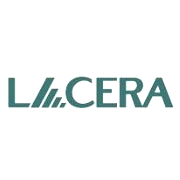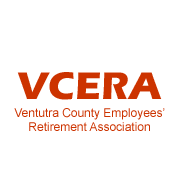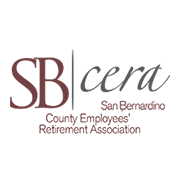Can I Work after Taking CalPERS Disability Retirement?
It’s a tough economy – and California is one of the most expensive States in the country in which to live. So it’s no surprise that the experienced disability retirement attorney at Cantrell Green are frequently asked by our clients if they can still work to bring in some extra income after taking disability retirement.
The answer to that question, however, is complicated. Whether you can work after taking CalPERS disability retirement depends on a number of factors – including whether your new job will be with: (1) with the same or another CalPERS employer; (2) with a different Public Retirement System; or (3) within the private sector.
Working within CalPERS after taking CalPERS Disability Retirement
There are specific laws on both the state and federal level that outline employment restrictions for retirees who return to work within the same public retirement system from whom they receive benefits. The laws were enacted to prohibit a retiree “double-dipping,” or in other words, receiving a monthly CalPERS retirement benefit while simultaneously receiving pay from a CalPERS employer.
ANY CalPERS retiree may work in a so-called CalPERS “retired annuitant positions only”. And disability retirement retirees are subject to additional requirements and restrictions.
A CalPERS Disability Retiree’s Responsibilities
Most retirees don’t understand that it is their responsibility to ensure they comply with the law. Upon making application for employment, the retiree should:
- Determine whether or not the employer contracts with CalPERS for retirement benefits.
- Let the prospective employer know that you are currently receiving retirement benefits from CalPERS, and whether those benefits are for service, disability or industrial disability.
- Restrict applications to jobs that are specifically for retired annuitant positions. It is permissible for disability retirees to obtain work as a permanent “retired annuitant” position upon receipt of CalPERS’ pre-approval.
Working after CalPERs Disability Retirement in Other Public Retirement Systems
Service retirees may work without terminating their CalPERS retirement and continue to receive benefits without restrictions as long as the new position qualifies for membership in a public retirement system other than CalPERS.
That is not so for disability retirement recipients. Restrictions exist for these retirees even if the employer’s benefits are contracted with a different public retirement system.
Working in the Private Sector After CalPERS Disability Retirement
Service retirees may retain their CalPERS retirement allowances while working in the private sector so long as the new employer is not under contract with CalPERS. But again, disability retirees are restricted in what work they can do, even for an employer in the private industry.
Restrictions on Working after CalPERS Disability Retirement
Disability retirement recipients are subject to several additional eligibility restrictions and requirements on top of all of the regular rules and restrictions. For instance, employees must immediately notify CalPERS as soon as they are no longer incapacitated.
If the employee goes back to work, the type of work becomes important. The new job must be significantly different from the position the employee held prior to retirement. In other words, it should not include the same type of duties or activities that the employee was previously restricted from performing. If the jobs are similar in nature, CalPERS must be notified immediately.
In the event the employee is under the minimum service retirement age and gets a new job where the duties are similar to the ones he or she was restricted from due to the disability, CalPERS may reevaluate the employee to determine if he or she should be reinstated from retirement.
Earning Limitations after CalPERS Disability Retirement
The government has placed earnings limits onto employees who have not yet reached the minimum service retirement age (50, 52, or 55). These restrictions appear in Government Code section 21432.
Earnings must reported to CalPERS, either monthly or quarterly. Essentially, the total amount that you make (what you earn as an employee plus your monthly retirement allowance) can’t be higher than the amount you made from the job you held prior to retirement. If the combined amount is greater, your retirement allowance will be reduced. However, as soon as you reach the minimum service retirement age, the earnings limit no longer applies.
In summary, disability retirees can get a new job and still receive your CalPERS retirement allowance. However, there are restrictions. Either your new employer must contract with a different public retirement system, be in private industry and not associated with CalPERS, or be a CalPERS-covered employer in a retired annuitant compliant position.
CalPERS Disability Retirement Attorneys
If you are considering applying for CalPERS Disability Retirement attorneys at Cantrell Green can help you navigate these restrictions and requirements – so you obtain your maximum CalPERS Disability Retirement benefits, and are still able to survive financially in California’s challenging economic climate.
Free Consultation with a CalPERs Attorney: 562-622-4800
This article applies to members of California Public Employees’ Retirement System (CalPERS); and does not reflect the rules, laws or regulations governing how other public retirement systems are administered. If you have question about another public employee retirement system, find your system, below – or call our attorneys at: 562-622-4800

Thank You for Visiting Our Disability Retirement Blog!
Our highly specialized disability retirement attorneys are committed to ensuring that every injured or disabled public employee obtains the disability retirement benefits he or she has earned.
We have successfully filed hundreds of disability retirement applications and appeals – obtaining millions of dollars in disability retirement benefits in our four decades of legal service.
In our Disability Retirement Blog, our attorneys keep you updated on the latest, news and information pertaining to CalPERS, CalSTRS, OCERS, LACERA. SBcera, VCERA & SDCERA disability retirement.











